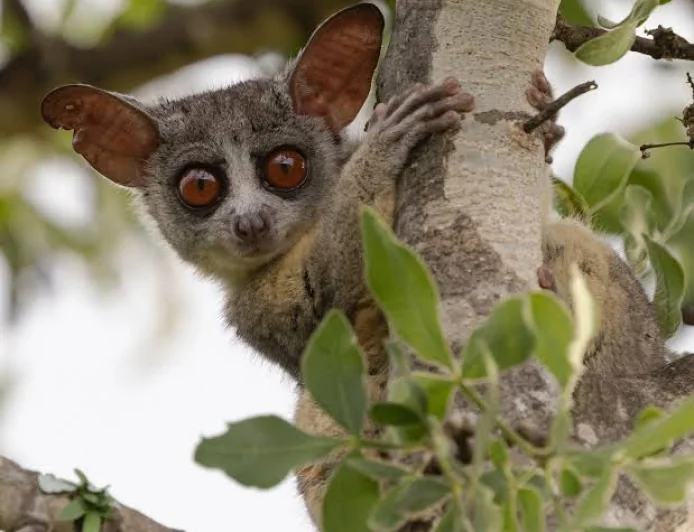The Bat eared fox
The bat-eared fox is a small but impressive silver-grey insectivorous dog that often has a yellowish-brown coat with a pale throat and underbelly. In Kidepo Valley and Pian Upe Game Reserve in Uganda, it is frequently observed.

The bat-eared fox (Otocyon megalotis) is a fox that lives on the African savanna. It is the only living species of the genus Otocyon and is classified as a primitive canid. It gets its name from its enormous ears, which help in thermoregulation. The bat alluded to in its vernacular name is most likely the Egyptian slit-faced bat (Nycteris thebaica), which is common in the area and has enormous ears.
Bat-eared foxes are small canids with weights ranging from 3 kg to 5.3 kg. The pelage is often tan, with grey agouti guard hairs that give it a grizzled appearance, but it appears more buff on the sides. The undersides and throat are paler than usual. The limbs are dark, with dark brown or black colouring on the extremities. The nose, tail tip, upper side, and facial mask are all black. The ear canals are white on the inside.
Otocyon megalotis virgatus, the East African subspecies, has a buff pelage with dark brown patterns, as opposed to the black of O. megalotis megalotis. The proportionally big ears of bat-eared foxes, which are shared by many other residents of hot, arid areas, aid in heat distribution. They also aid in the capture of prey.
The Bat-eared Foxes' Behaviour
They frequently dwell in couples or groups, and group home ranges either overlap significantly or very little. Bat-eared foxes in southern Africa live in monogamous pairs with kits, whereas those in eastern Africa may live in pairs or in stable family groups comprising a male and up to three closely related females with cubs. Individuals forage, play, and rest in groups, which serves to protect them from predators. They engage in regular and extended allogrooming sessions to build group cohesion, primarily between mature adults but also between young adults and older adults.
They also utilize their tails to communicate, arching their tail in an inverted U form when establishing dominance or aggression, feeling threatened, playing, or sexually excited. The bat-eared fox communicates by contact and warning cries, which are typically made during rainy, chilly nights.
Bat-eared fox reproduction
The bat-eared fox is primarily monogamous, though polygynous groups have been seen. Unlike most canids, the bat-eared fox displays a reversal in parental duties, with the male performing the majority of parental care. Females give birth to litters of one to six kits after 60-70 days of gestation. Males take up grooming, defending, huddling, chaperoning, and moving the young between den sites after nursing, which lasts 14 to 15 weeks. Furthermore, male care and den attendance rates have been demonstrated to be directly related to cub survival rates. The female forages for food in order to maintain milk production, on which the pups rely heavily. Food foraged by the female is not returned to or regurgitated by the pups.
Bat eared fox diet
The only genuinely insectivorous canids are bat-eared foxes, who have a clear preference for harvester termites (Hodotermes mossambicus), which can make up 80–90% of their diet. Their opportunistic diet enables them to consume a wide range of food items when this particular species of termite is not available. They can eat other species of termites, other arthropods like ants, beetles (especially scarab beetles), crickets, grasshoppers, millipedes, moths, scorpions, spiders, and, rarely, birds, birds' eggs and chicks, small mammals, reptiles, and fung (the desert truffle Kalahari Tuber pfeilii). Also eaten are berries, seeds, and wild fruit. Because it is not suited to withstand the chemical defence of termites, the bat-eared fox avoids eating snouted harvester termites. The high-water content of their diet helps bat-eared foxes generally meet their hydration needs. During lactation, water is a crucial resource.
Where in Uganda can you find the bat-eared fox?
The Kidepo Valley National Park and Pian Upe in the north-eastern Karamoja area of Uganda are good places to look for the bat-eared fox.
What's Your Reaction?
 Like
0
Like
0
 Dislike
0
Dislike
0
 Love
0
Love
0
 Funny
0
Funny
0
 Angry
0
Angry
0
 Sad
0
Sad
0
 Wow
0
Wow
0













































































